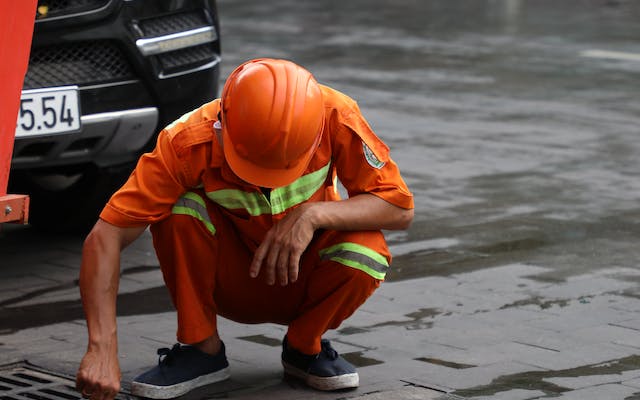
The Essential Guide to Drainage Inspection and Maintenance
Proper drainage is the unsung hero of property health, safeguarding buildings and landscapes from the detrimental effects of water damage. In this guide, we delve into the crucial aspects of drainage inspection and maintenance, offering insights into how property owners can protect their investments and ensure the longevity of their structures.
Table of Content
- 1 Understanding Drainage Systems
- 2 Signs of Drainage Issues
- 3 Residential Drainage Inspection
- 4 Commercial Drainage Inspection
- 5 Importance of Regular Maintenance
- 6 DIY Drainage Maintenance Tips
- 7 Professional Drainage Maintenance Services
- 8 Effective Drainage Solutions
- 9 Addressing Common Drainage Problems
- 10 The Role of Technology in Drainage Maintenance
- 11 Environmental Considerations in Drainage
- 12 Importance of Timely Repairs
- 13 Conclusion
Understanding Drainage Systems
Every property, whether residential or commercial, relies on a drainage system to channel rainwater and prevent water buildup. A well-designed system includes components such as gutters, downspouts, and grading that collectively ensure effective water management. Understanding these components is the first step in comprehending how drainage systems function to safeguard against potential damage.
Signs of Drainage Issues
Detecting early signs of drainage problems is imperative for preventing extensive damage. Common indicators include water pooling around the foundation, basement flooding, and erosion in the landscape. Recognizing these signs allows for timely intervention, mitigating the risk of more severe structural issues down the line.
Residential Drainage Inspection
Homeowners can take a proactive approach by conducting DIY inspections of their drainage systems. This involves checking gutters and downspouts for debris, ensuring proper grading to facilitate water runoff, and identifying any signs of poor drainage around the house. Regular maintenance of gutters and downspouts is paramount to prevent blockages and ensure the smooth flow of water away from the foundation.
Commercial Drainage Inspection
For commercial properties, a more comprehensive approach is often required. Professional drainage inspection services cater to large-scale environments, identifying challenges unique to commercial settings. This involves assessing the efficiency of existing drainage systems, addressing potential issues with landscaping, and implementing strategies tailored to the property’s specific needs.
Importance of Regular Maintenance
Routine maintenance is the cornerstone of effective drainage systems. For homeowners, simple DIY tasks like clearing debris from gutters can go a long way. Professionals offer more comprehensive services for commercial properties, including scheduled maintenance that prevents costly repairs. Investing in regular maintenance ensures that drainage systems remain in optimal condition, ready to handle rainwater effectively.
DIY Drainage Maintenance Tips
Homeowners can play an active role in maintaining their drainage systems. Clearing debris and obstructions from gutters and downspouts, ensuring proper grading, and installing features like French drains are effective DIY strategies. These simple yet impactful measures contribute to preventing water-related issues and maintaining the structural integrity of the property.
Professional Drainage Maintenance Services
Professional services take drainage maintenance to the next level. Drainage professionals offer a range of services, from routine inspections to more complex interventions. Scheduled maintenance plans provide peace of mind for property owners, knowing that their drainage systems are in the hands of experts who can identify and address potential issues before they escalate.
Effective Drainage Solutions
Installing proper drainage systems tailored to the specific needs of different landscapes is essential. This may involve addressing water pooling issues, erosion concerns, or implementing sustainable drainage solutions for eco-friendly properties. The goal is to channel water away from vulnerable areas, preserving the integrity of the property and surrounding landscapes.
Addressing Common Drainage Problems
Standing water in yards, basement flooding, and soil erosion are common drainage challenges. Tailoring solutions to each problem is crucial. Implementing proper drainage systems, such as French drains or sump pumps, can effectively address these issues, ensuring that excess water is redirected away from areas prone to damage.
The Role of Technology in Drainage Maintenance
Innovative tools, such as drainage camera inspection technology, have revolutionized the way professionals assess drainage systems. These advanced cameras allow for in-depth inspections of pipes and drainage structures, enabling precise identification of potential issues. The use of technology enhances the accuracy and efficiency of drainage maintenance, ensuring a comprehensive understanding of the system’s condition.
Environmental Considerations in Drainage
Balancing effective drainage with environmental responsibility is a growing concern. Eco-friendly drainage solutions prioritize sustainability, minimizing the impact on the surrounding ecosystem. Preventing water pollution is also crucial, emphasizing the importance of responsible drainage practices that align with environmental stewardship.
Importance of Timely Repairs
Delaying drainage repairs can exacerbate problems, leading to more extensive and costly damage. Recognizing signs that indicate the need for immediate repairs is crucial. Whether it’s addressing a pipe leak or reinforcing eroded areas, timely intervention preserves the structural integrity of the property and averts potential disasters.
Conclusion
In conclusion, this guide underscores the critical aspects of drainage inspection and maintenance for both residential and commercial properties. From understanding the components of drainage systems to implementing effective solutions and leveraging technology, property owners can ensure the longevity of their structures. Investing in drainage camera inspection technology and proactive maintenance is not just about safeguarding against immediate issues but about securing the future health of the property. By prioritizing drainage, property owners can navigate the challenges of water management with confidence, preserving the integrity and value of their investments.


